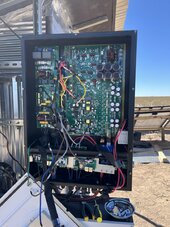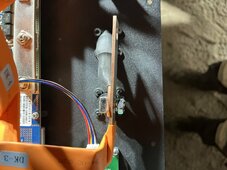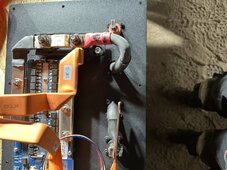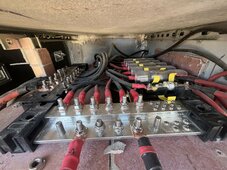If anyone can help me understand what went wrong, and any mistakes that I am personally made can you please chime in. I built this system off grid and spent four+ months designing.
I’ve taught myself by watching videos from Will and others on YouTube. This forum has been a tremendous help. I consider myself a cautious intermediate though. Therefore I meticulously spent hundreds of hours planning and to be at this point is disappointing.
I’m not sure exactly what I did wrong or if this was an issue related to following the Apex assembly manual. It seems like many others are having fine experiences with these batteries. The SOC was at 140Ah I discovered. When building the system, Docan had told me that I couldn’t modify the BMS. Perhaps it was a misunderstanding. This time I have the app. I’ve been out in the desert for the last 10 days trying to fix this and I’m going home tomorrow defeated.
To be honest, my fist assumption was you did something wrong. It wasn't untill I found the crappy Apexium manual to find out the mistakes you made were based on wrong information, and I don't think you can blame yourself for following a mfg manual. It's reasonable to assume a manual is correct...
So don't blame yourself in this, DIY is a matter of try and learn, and sometimes fail. And there is a huge difference between failing because you f*cked up, or failing because you trusted information which only at a later stage seemed to be false.
I do agree with a commend about those breakers not suitable for the voltages, but that's not the main issue here, and I would condider replacing those as a later point of improvement.
As for the inverters: Technically, I can't make up my mind how a single battery failure would cause the inverters to fail. Since you have multiple batteries, DC ripple is limited since not all connections/batteries were crap. Unfortunately I'm not familiar with those inverters.
Language / translation is always an issue, especially if English isn't your native language. It's mine neither. Imho a lot of translation errors can occur with automated translations. Sometimes they do a good job, other times the f*ckup massivly. And with some more sensitive topics like a DIY battery, a tiny translation error can have huge effects.
I never use google translate (hence some errors in my posts)
In this case it wasn't just a translation error, but lack of QC. Some idiot made the pictures and no-one cared/bothered/had sufficient knowledge to spot the errors and they just released the manual.






